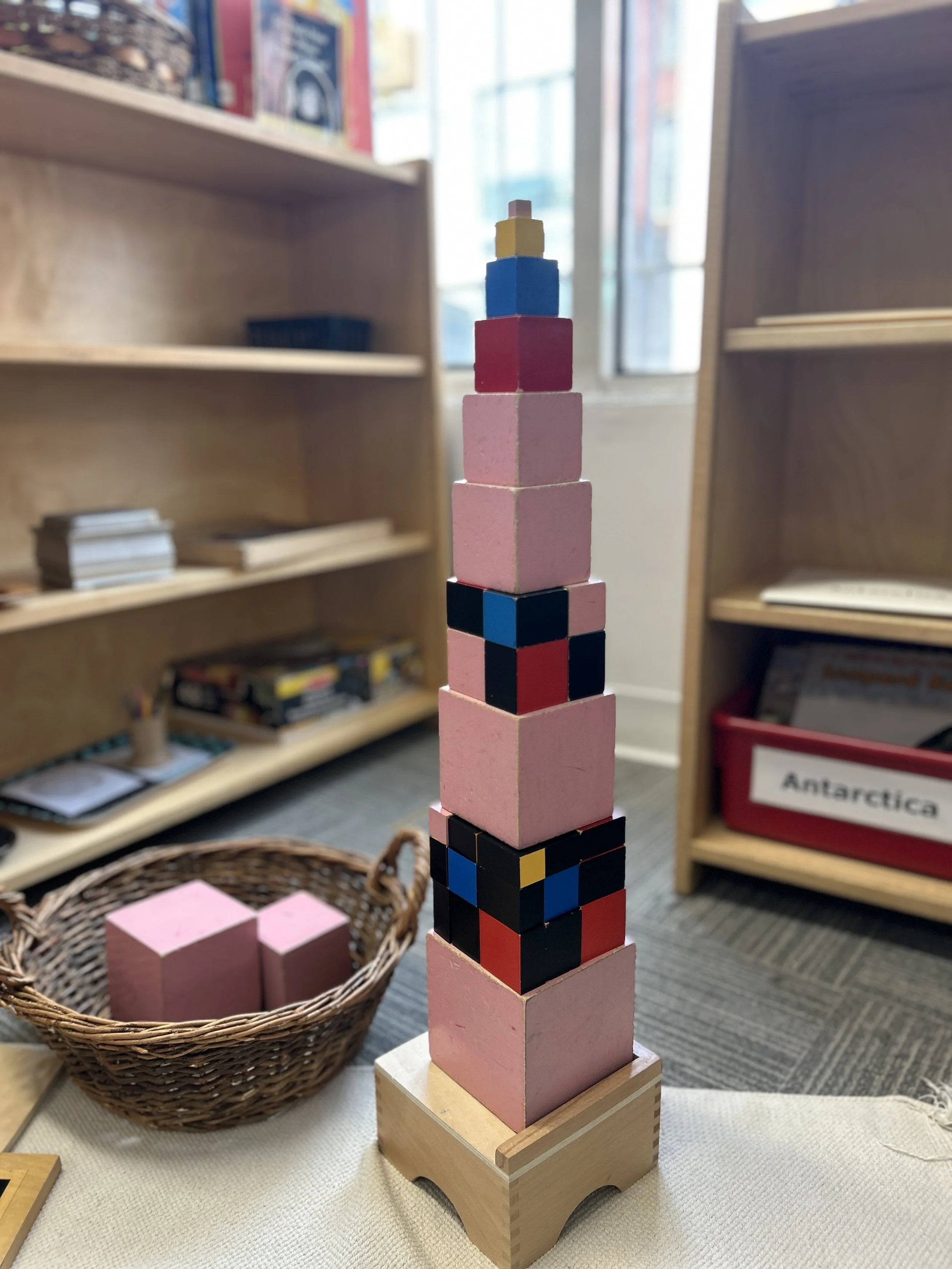Freedom within Limits
“Being free to do what we ought to do within limits of responsibility is true freedom.”
Balancing Freedom and Limits in Montessori Education
Dr. Montessori believed in balancing freedom with limits, understanding freedom not as permissiveness but as intentional autonomy shaped by clear boundaries. According to Montessori, freedom allows a child to act independently within a thoughtfully designed environment, making meaningful choices and directing their own learning. Limits, on the other hand, establish necessary boundaries that provide safety, respect, and a supportive atmosphere for exploration. Rather than restricting children's freedom, these boundaries enhance it by offering a sense of safety and predictability.
Young children naturally seek order, and clear boundaries help them feel secure, which is essential for their emotional and cognitive development. Montessori classrooms exemplify this by intentionally offering developmentally appropriate materials to children, enabling them to carry out activities independently. In the 0–3 environment, infants and toddlers freely select their own work on shelves and are gradually guided to learning how to carry their work, practice and repeat their work at a table (or rug), and replace their material back on the shelf. They also learn how to care for their environment and develop purposeful skills, such as learning how to set the table. These skills naturally foster a sense of responsibility in the growing child and support the construction of schemas for purposeful actions that benefit themselves and others in their community. In the 3-6 environment, children freely select activities from low shelves organized into five key curriculum areas; Practical Life, Sensorial, Math, Language, and Cultural Studies. During extended three-hour work cycles, children self-select materials, engage with hands-on, self-correcting materials, and return the materials to their places. Following their own rhythms, they learn to take responsibility for their environment, navigate within a community of children, and develop at their own pace.
Expressing Limits Positively
Expressing limits positively is essential for healthy child development. Instead of giving negative commands, or saying what not to do—such as “don’t run” or “don’t yell” adults can communicate clearly what children should do, saying “we walk inside, we run outside,” or “we talk inside, we yell outside.” Positive phrasing respects children's dignity, provides clarity, and helps them understand appropriate behaviors without confusion.
Supporting children in adhering to limits can involve using forced choices, which gives children a sense of autonomy even when compliance is necessary. For instance, if a child stands on a chair, rather than commanding them to get down, the adult might say:
“You need to get down from that chair. Would you like me to help you, or can you get down by yourself?”
Similarly, if a child is having trouble transitioning when it’s time to go, the adult might say:
“We need to go outside now. Do you want me to help you put your shoes on, or will you put them on yourself?”
This approach supports children's autonomy, sense of choice, and also helps them grow in their ability to self-regulate.
Montessori and Authoritative Parenting
I believe Montessori education closely resembles authoritative parenting, characterized by warmth, nurturing, and clear, consistent structure. Authoritative caregivers set firm, understandable boundaries while granting children considerable freedom within these limits. They allow for meaningful discussions about rules, cultivating mutual respect and collaboration. Unlike authoritarian parenting, which is strict and punitive, or permissive parenting, which lacks any boundaries, authoritative parenting, and Montessori education, affectionately guide children by modeling desired behaviors, providing choices within defined limits, and nurturing intrinsic motivation.
By weaving freedom and limits together in this way, Montessori environments empower children to explore safely, learn independently, and develop the self-discipline that becomes the cornerstone of lifelong growth.
